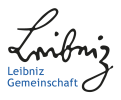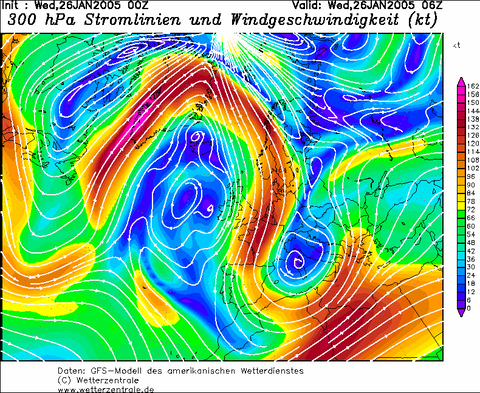ROMA/LEWIZ: Fate of inertia-gravity waves to the middle atmosphere
Summary
The fate of inertia-gravity waves from the troposphere up to the mesosphere will be observed with radiosondes, radar and falling spheres. Specific features of their generation, propagation and breaking will be identified and related to the dynamic environment characterised by a poleward breaking Rossby wave and an intense polar vortex.
Organisation
- Principle investigator: Franz-Joseph Lübken
- Contributors: Werner Singer (scientist in charge), Dieter H.W. Peters, Christoph Zülicke, Peter Hoffmann, Andrey Serafimovich, Boris Strelnikov
- Runtime: 2005
- Funding: LEWIZ from IAP and DFG / ROMA (Rocket-borne Oberservation in the Middle Atmosphere)
Activities
- diverse observations at Andenes from 18 to 27 January 2005 with radiosonde, falling spheres, chaffs, radar, see detailed inventory
Results
- a wind climatology for Andenes has been prepared and the synoptic situation for the campaign has been characterised
- a joint dataset has been generated from radiosondes, radars and falling spheres; ECMWF analyses and MM5 simulations are available
2nd Status report: LEWIZ salvo on 25/27 January, 2005
The objective of the second salvo (LEWIZ salvo) was the observation of inertia-gravity waves generated by a tropospheric jet stream during a Rossby wave breaking event by measurements of 1) temperatures from the troposphere to the lower thermosphere, measured by radiosondes, lidars, falling spheres, and meteor radar and 2) winds by chaff, falling spheres, radiosondes, radars and lidars.
A Rossby wave breaking event with a maximum on January 25 at about 18:00 UT was predicted by D. Peters.
In situ observations:
The forecast showed a persisting wave breaking event and decreasing ground winds (Fig. 1 and 2). The ground winds were still too strong on forenoon of January 26 but decreasing in the afternoon hours. Rocket launches were again prevented by an extreme strong tropopause jet with wind speeds up to 85 m/s at 9 km altitude (measured by radiosondes). The last launches of three radiosondes and one falling sphere could be done successfully under still persisting conditions on January 27. All five falling spheres provided good tracking data down altitudes between 24 and 31 km. 11 of 15 radiosondes reached altitudes between about 26 and 31 km. In three cases the top altitude of a radiosonde and lowest altitude reached by a falling sphere are close together in altitude and time.
The parameters of all met rocket launches (total 23: 2 instrumented rockets, 4 chaff launches, 16 falling spheres, 1 failure) and radiosonde soundings (total 21: 6 Vaisala sondes RS80, 15 Sippican sondes MarkII) are summarised in the tables below. A first view on the temperatures measured by radiosondes showed for the period 25-27 January low stratospheric temperatures below -78°C at altitudes between 17 and 25 km and a about 2-4 km thick layer with temperatures below -86°C above altitudes of 21-22 km.
Ground-based observations:
All MF, HF, and VHF radar experiments acquired continuously data and provided real-time analysed results for scientific launch decision as well as for support of launch control (tropospheric/lower stratospheric winds). The ALWIN VHF radar (53.5 MHz) measured winds and turbulence between about 1.2 km and about 15 km as well as echo power between 50-114 km for PMWE detection (300 m height resolution). Only weak and patchy polar mesosphere winter echoes were observed in the forenoon hours of January 22, 23, and 24. The Saura MF radar (3.17 MHz) performed measurements of Doppler and spaced antenna winds, turbulence, and electron density between 40 and 103 km. The Andenes MF radar (1.98 MHz) measured spaced antenna winds between 60 km and 92 km at 3-min time resolution. The ALOMAR meteor radar (32.55 MHz) obtained meteor winds (82 - 98 km) and daily mean temperatures (90 km). Figures 3 to 6 present results of the real-time data analyses of ALWIN radar observations during the LEWIZ salvo. The local weather forecast predicted strong winds at ground level for this time which prevents to launch met rockets. The start of the campaign was advanced to January 25, 00:00 UT. The launch of met rockets had to be stopped at about 08:00 UT due to increasing winds. In addition, the launch of radiosondes had also to be stopped at 11:00 UT due to severe weather. Four met rockets with falling spheres and 8 radiosondes could be launched in the first part of the salvo.
Lidar measurements were not possible due to bad weather conditions.
Andenes, 30 January 2005 Werner Singer and Ralph Latteck
Privatdozent Dr. habil. Dieter H.W. Peters
Tel. : +49 (0) 38293 68 380
Fax : +49 (0) 38293 68 50















